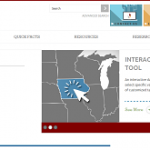Everything You Wanted to Know About Pension Plans But Were Afraid to Ask
 Retirement planning and pensions are becoming increasingly important issues for many people and organizations, and so access to comprehensive and accurate pension data is critical for policy makers, analysts, journalists and many others. Gnaritas recently completed a major development project to enhance and expand the “Public Plans Data” (PPD) interactive website and database, which provides an overview of all public sector pension plans through aggregated data and statistics at national, state and plan levels.
Retirement planning and pensions are becoming increasingly important issues for many people and organizations, and so access to comprehensive and accurate pension data is critical for policy makers, analysts, journalists and many others. Gnaritas recently completed a major development project to enhance and expand the “Public Plans Data” (PPD) interactive website and database, which provides an overview of all public sector pension plans through aggregated data and statistics at national, state and plan levels.
The PPD was created through a collaboration of Boston College’s Center for Retirement Research (CRR), the Center for State and Local Government Excellence (SLGE) and the National Association of State Retirement Administrators (NASRA), and Gnaritas worked to ensure that the goals of the content and data providers, and the data users, were fully addressed by a highly interactive and intuitive approach to the design and functionality of the site and database content.
On the site, users can:
- Browse and download the full data set, which currently contains plan-level data from 2001 through 2013 for 150 pension plans. This sample covers 90 percent of public pension membership and assets nationwide.
- Generate and embed popular charts on their own website or blog
- Search and download a wide range of resources such as issue briefs, working papers and research published by the CRR, SLGE and NASRA
- Refer to ‘quick facts’ at the national, state and plan level, such as assets, costs, fiscal health and investments.
- Download Comprehensive Annual Financial Reports (CAFRs) and Actuarial Valuations (AVs) for the plans in the PPD sample
The data is used for a variety of purposes, so to maximize the PPD’s flexibility we developed an interactive data browser; this allows the user to select specific variables to produce customized tables to suit their particular requirements.
We also developed full documentation, including a wide range of variables and filters to review the data set, and also direct data access for programmers via an XML-based API, allowing users to connect directly to the PPD database and receive updates as they are made.
Non-programmers can also make use of real time data feeds by simply copying a few lines of code into their blog or websites to easily embed visualizations of PPD data, further increasing the site’s reach as a comprehensive and current resource.
Our approach is always to fully understand the needs of all user groups and then partner collaboratively with our clients to develop the final product, and the PPD was a great example of how complex, continually changing data can be made not only accessible, but engaging to a wide range of audiences.
